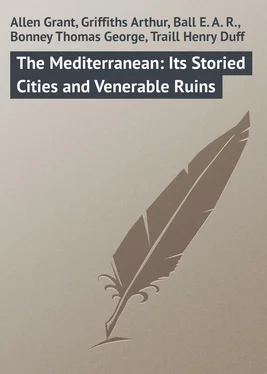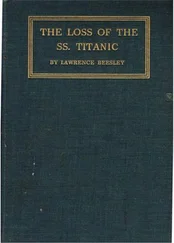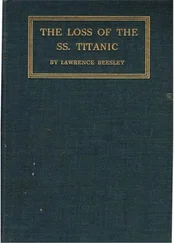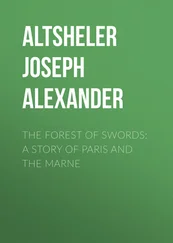E. Ball - The Mediterranean - Its Storied Cities and Venerable Ruins
Здесь есть возможность читать онлайн «E. Ball - The Mediterranean - Its Storied Cities and Venerable Ruins» — ознакомительный отрывок электронной книги совершенно бесплатно, а после прочтения отрывка купить полную версию. В некоторых случаях можно слушать аудио, скачать через торрент в формате fb2 и присутствует краткое содержание. Жанр: Путешествия и география, foreign_prose, foreign_language, на английском языке. Описание произведения, (предисловие) а так же отзывы посетителей доступны на портале библиотеки ЛибКат.
- Название:The Mediterranean: Its Storied Cities and Venerable Ruins
- Автор:
- Жанр:
- Год:неизвестен
- ISBN:нет данных
- Рейтинг книги:3 / 5. Голосов: 1
-
Избранное:Добавить в избранное
- Отзывы:
-
Ваша оценка:
- 60
- 1
- 2
- 3
- 4
- 5
The Mediterranean: Its Storied Cities and Venerable Ruins: краткое содержание, описание и аннотация
Предлагаем к чтению аннотацию, описание, краткое содержание или предисловие (зависит от того, что написал сам автор книги «The Mediterranean: Its Storied Cities and Venerable Ruins»). Если вы не нашли необходимую информацию о книге — напишите в комментариях, мы постараемся отыскать её.
The Mediterranean: Its Storied Cities and Venerable Ruins — читать онлайн ознакомительный отрывок
Ниже представлен текст книги, разбитый по страницам. Система сохранения места последней прочитанной страницы, позволяет с удобством читать онлайн бесплатно книгу «The Mediterranean: Its Storied Cities and Venerable Ruins», без необходимости каждый раз заново искать на чём Вы остановились. Поставьте закладку, и сможете в любой момент перейти на страницу, на которой закончили чтение.
Интервал:
Закладка:
Near the Cathedral, law courts, and Provincial Parliament House stands another picturesque old palace of comparatively modern date, yet Saracenic aspect, and containing one of the most curious historic treasures in Europe. This is the palace of the kings of Aragon, or Archivo General de la Corona de Aragon. The exterior, as is usual with Spanish buildings, is massive and gloomy. Inside is a look of Oriental lightness and gaiety. Slender columns, painted red, enclose an open court, and support a little terrace planted with shrubs and flowers. Here in perfect order and preservation, without a break, are stored the records of upwards of a thousand years, the earlier consisting of vellum scrolls and black letter, the latter showing the progress of printing from its beginning down to our own day. The first parchment bears date A. D. 875. Among the curiosities of the collection are no less than eight hundred and two Papal Bulls from the year 1017 to 1796. Besides the archives of Barcelona itself, and of the kingdom of Aragon, to which it was annexed in the twelfth century, the palace contains many deeply interesting manuscripts found in the suppressed monasteries.
The archives have been ingeniously arranged by the learned keeper of records. The bookcases, which are not more than six feet high, stand on either side of the vast library, at some distance from the wall, made staircase-wise; one set of volumes just above the other, with the result that no accumulation of dust is possible, and that each set is equally accessible. The effect on the eye of these symmetrically-placed volumes in white vellum is very novel and pleasing. We seem to be in a hall, the walls of which are of fluted cream-colored marble.
The little museum of local antiquities in the ruined Church of Santa Agneda, the somber old churches of San Pablo del Campo, Santa Maria del Mar and Belen, the fragments of mediæval domestic architecture remaining here and there – all these will detain the archæologist. Of more general interest are the modern monuments of Barcelona. In no city have civic lavishness and public spirit shone forth more conspicuously.
A penny tramway – you may go anywhere here for a penny – takes you to the beautiful Park and Fountain of Neptune. The word “fountain” gives an inadequate notion of the splendid pile, with its vast triple-storied marble galleries, its sculptured Naiads and dolphins, and on the summit, towering above park and lake and cascades, its three gigantic sea-horses and charioteers richly gilt, gleaming as if indeed of massive gold. Is there any more sumptuous fountain in the world? I doubt it. In spite of the gilded sea-horses and chariot, there is no tawdriness here; all is bold, splendid, and imposing. Below the vast terraced galleries and wide staircases, all of pure marble, flows in a broad sheet the crystal-clear water, home of myriads of gold fish. The entourage is worthy of so superb a construction. The fountain stands in the midst of a scrupulously-kept, tastefully laid-out, ever-verdant park or public pleasure-ground. In November all is fresh and blooming as in an English June. Palms, magnolias, bananas, oleanders, camellias, the pepper-tree, make up a rich, many-tinted foliage. Flowers in winter-time are supplanted by beds of brilliant leaved plants that do duty for blossoms. The purple, crimson, and sea-green leaves are arranged with great effect, and have a brilliant appearance. Here surrounded by gold green turf, are little lakes which may be sailed across in tiny pleasure skiffs. At the chief entrance, conspicuously placed, stands the fine equestrian monument to Prim, inaugurated with much civil and military pomp some years ago. It is a bold statue in red bronze. The general sits his horse, hat in hand, his fine, soldier-like face turned towards the city. On the sides of the pedestal are bas-reliefs recording episodes of his career, and on the front these words only, “Barcelona à Prim.” The work is that of a Spanish artist, and the monument as a whole reflects great credit alike to local art and public spirit.
But a few minutes’ drive brings us within sight of a monument to one of the world’s heroes. I allude to the memorial column recently raised to Columbus by this same public-spirited and munificent city of Barcelona. Columbus, be it remembered, was received here by Ferdinand and Isabella after his discovery of America in 1493. Far and wide over hills and city, palm-girt harbor, and sea, as a lighthouse towers the tremendous obelisk, the figure of the great Genoese surmounting it, his feet placed on a golden sphere, his outstretched arm pointing triumphantly in the direction of his newly-discovered continent as much as to say, “It is there!”
Never did undertaking reflect more credit upon a city than this stupendous work. The entire height of the monument is about two-thirds of the height of the Monument of London. The execution was entrusted to Barcelonese craftsmen and artists; the materials – bronze, stone, and marble – all being supplied in the neighborhood.
On the upper tier of the pedestal are statues of the four noble Catalans who materially aided Columbus in his expedition – by name Fray Boyl, monk of Montserrat, Pedro Margarit, Jaime Ferrer, and Luis Sentangel. Below are allegorical figures representing, in the form of stately matrons, the four kingdoms of Catalonia, Castille, Aragon, and Leon. Bas-reliefs, illustrating scenes in the career of the discoverer, adorn the hexagonal sides, six magnificent winged lions of greystone keep jealous watch over the whole, and below these, softening the aspect of severity, is a belt of turf, the following inscription being perpetually written in flowers: “Barcelona à Colon.” The column is surmounted by a globe burnished with gold, and above rises the colossal figure of Columbus.
No happier site could have been selected. The monument faces the sea, and is approached from the town by a palm-bordered walk and public garden. The first object to greet the mariner’s eye as he sights land is the figure of Columbus poised on his glittering ball; the last to fade from view is that beacon-like column towering so proudly above city and shore. A little excursion must be made by boat or steamer, in order to realize the striking effect of this monument from the sea.
To obtain a bird’s-eye view of Barcelona itself, the stranger should go some distance inland. The Fort of Montjuich, commanding the town from the south, or Mont Tibidaho to the north, will equally answer his purpose. A pretty winding path leads from the shore to a pleasure-garden just below the fort, and here we see the entire city spread as in a map at our feet. The panorama is somewhat monotonous, the vast congeries of white walls and grey roofs only broken by gloomy old church towers and tall factory chimneys, but thus is realized for the first time the enormous extent of the Spanish Liverpool and Manchester in one. Thus, indeed, may Barcelona be styled. Looking seaward, the picture is animated and engaging – the wide harbor bristling with shipping, lateen-sailed fishing boats skimming the deep-blue sunny waves, noble vessels just discernible on the dim horizon.
The once celebrated promenade of the Murallo del Mar, eulogized by Ford and other writers, no longer exists, but the stranger will keep the sea-line in search of the new cemetery. A very bad road leads thither, on All Saints’ and All Souls’ days followed by an unbroken string of vehicles, omnibuses, covered carts, hackney carriages, and private broughams; their occupants, for the most part, dressed in black. The women, wearing black Cashmere mantillas, are hardly visible, being hidden by enormous wreaths, crosses, and bouquets of natural and also of artificial flowers. The new cemetery is well placed, being several miles from the city, on high ground between the open country and the sea. It is tastefully laid out in terraces – the trees and shrubs testifying to the care bestowed on them. Here are many costly monuments – mausoleums, we should rather say – of opulent Barcelonese, each family possessing its tiny chapel and burial-place.
Читать дальшеИнтервал:
Закладка:
Похожие книги на «The Mediterranean: Its Storied Cities and Venerable Ruins»
Представляем Вашему вниманию похожие книги на «The Mediterranean: Its Storied Cities and Venerable Ruins» списком для выбора. Мы отобрали схожую по названию и смыслу литературу в надежде предоставить читателям больше вариантов отыскать новые, интересные, ещё непрочитанные произведения.
Обсуждение, отзывы о книге «The Mediterranean: Its Storied Cities and Venerable Ruins» и просто собственные мнения читателей. Оставьте ваши комментарии, напишите, что Вы думаете о произведении, его смысле или главных героях. Укажите что конкретно понравилось, а что нет, и почему Вы так считаете.












